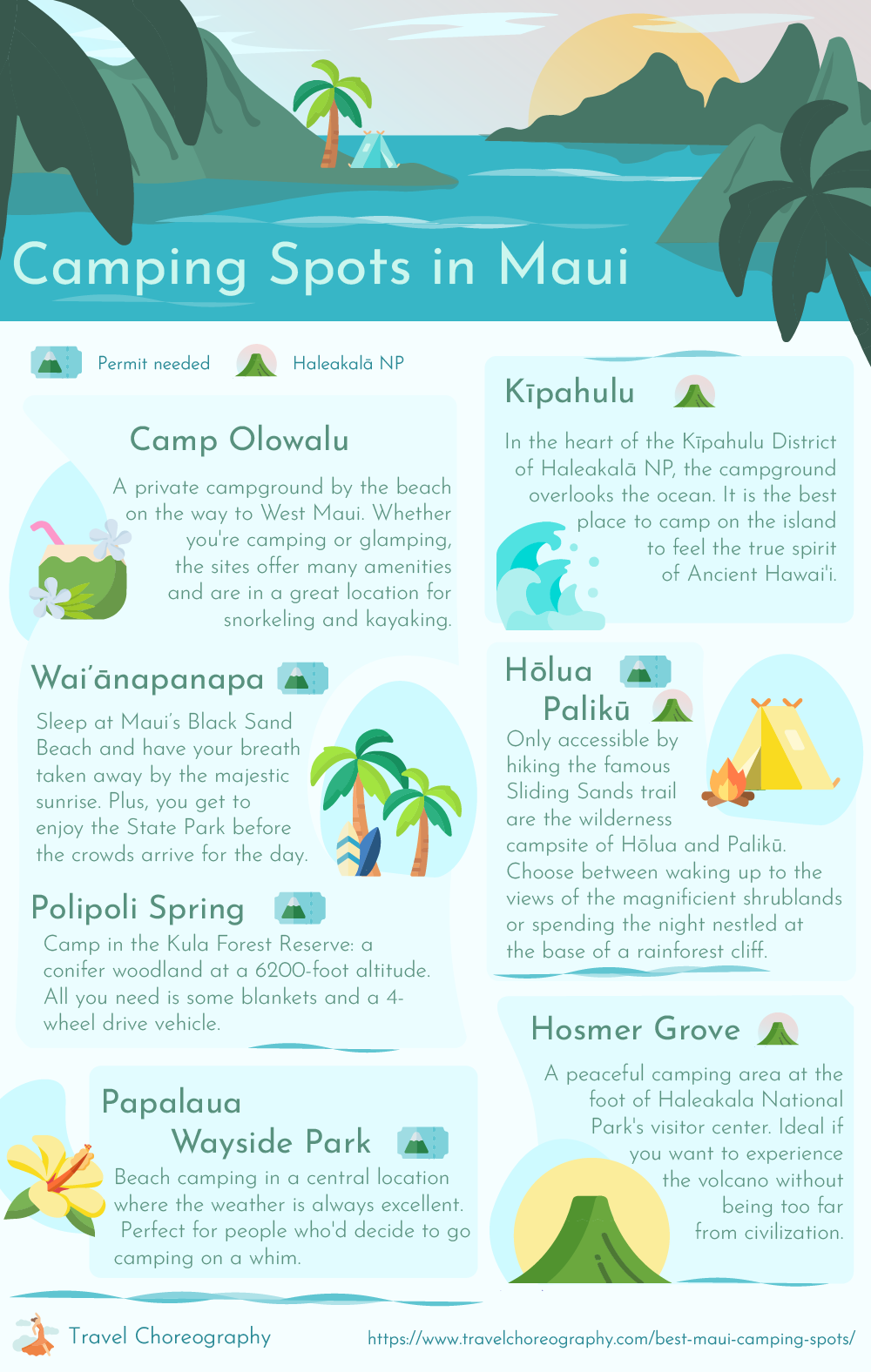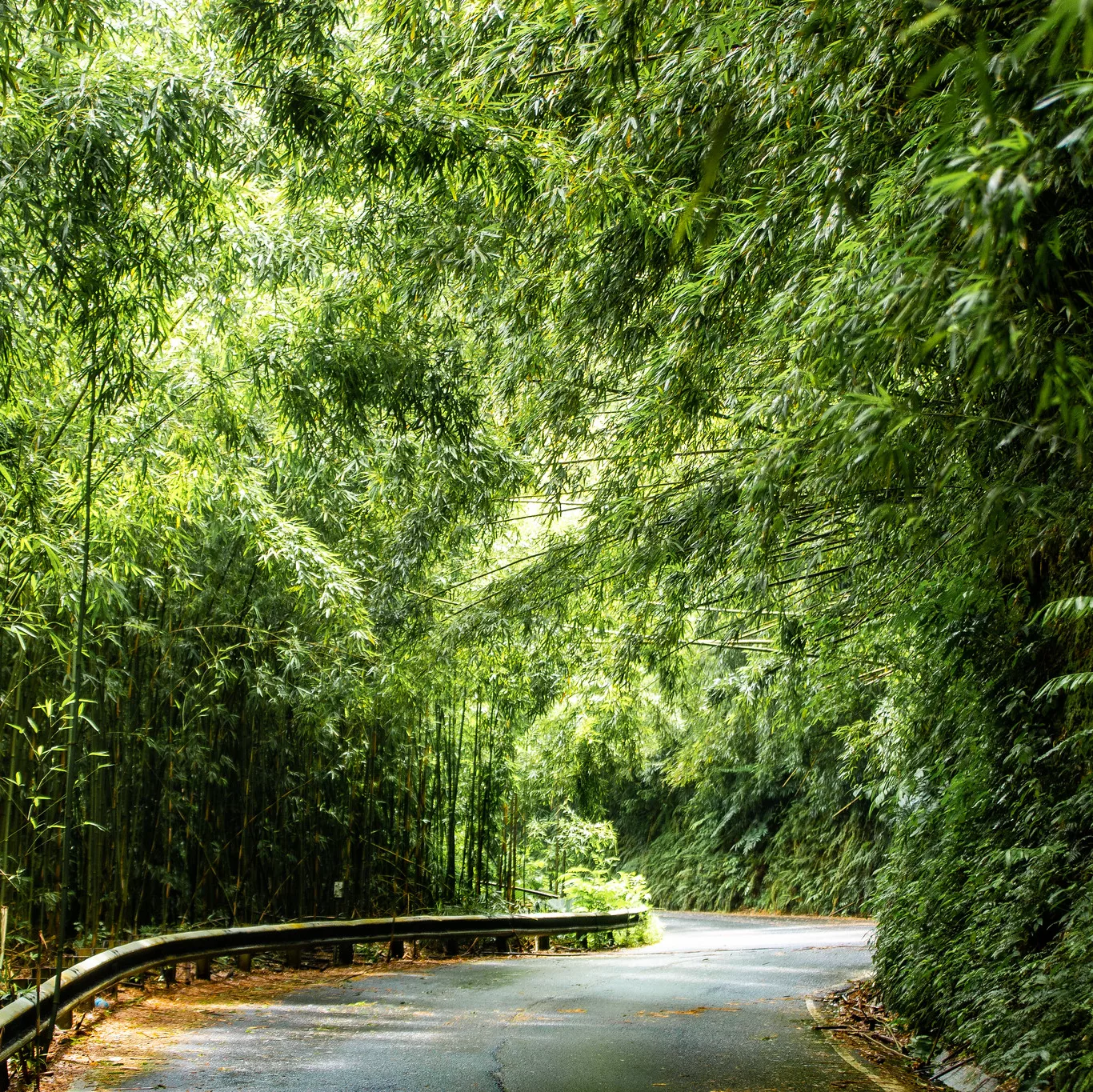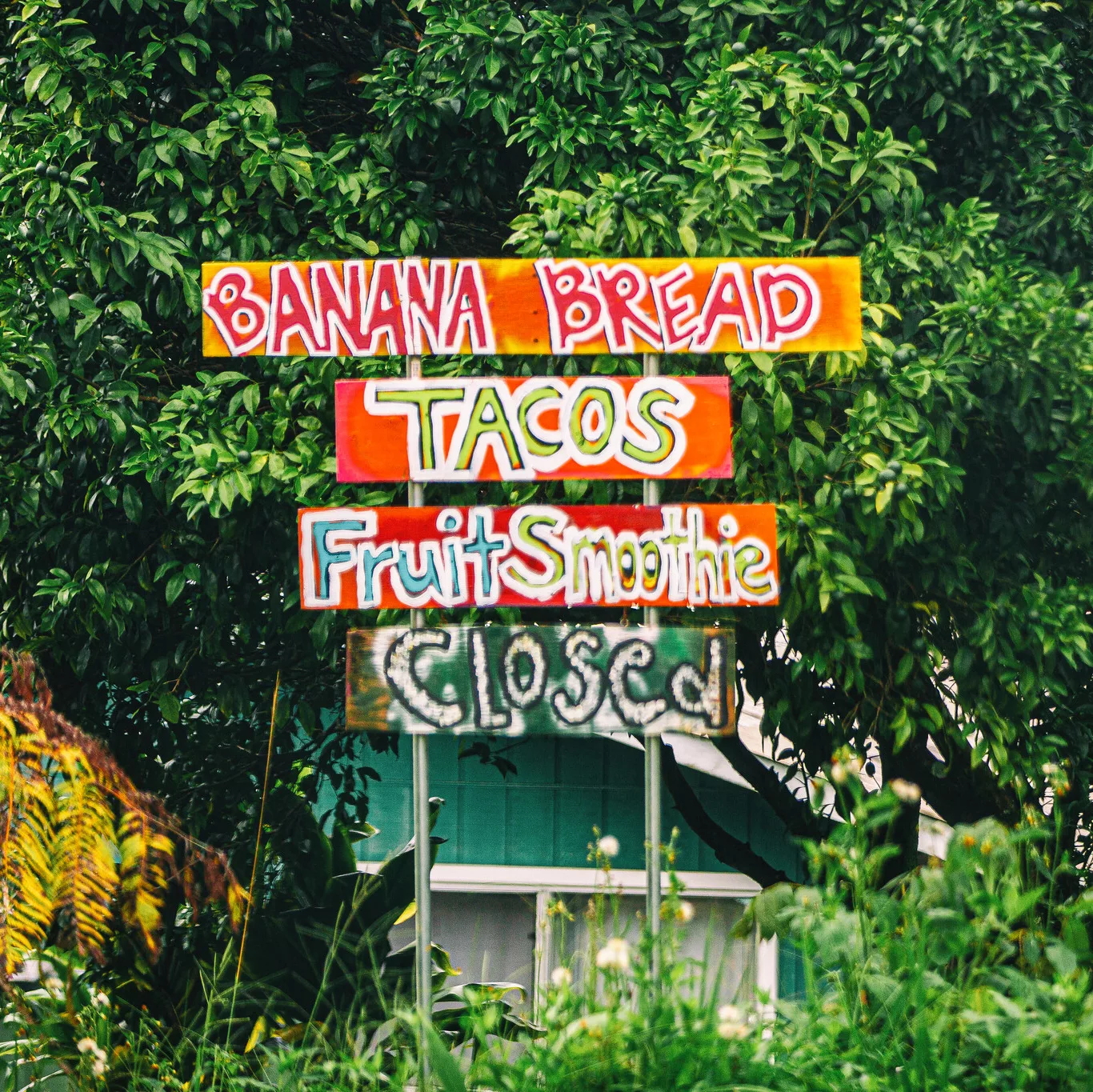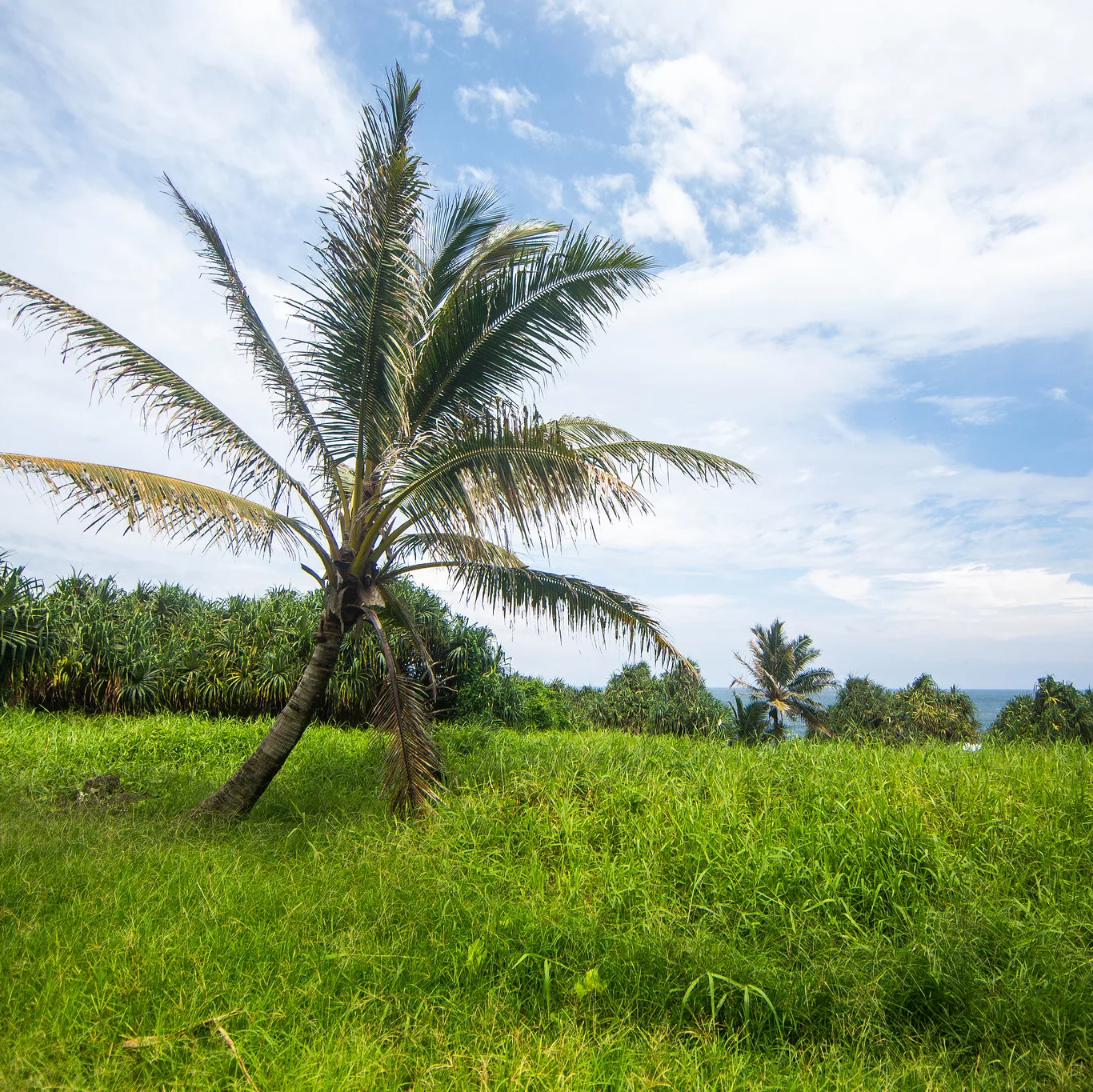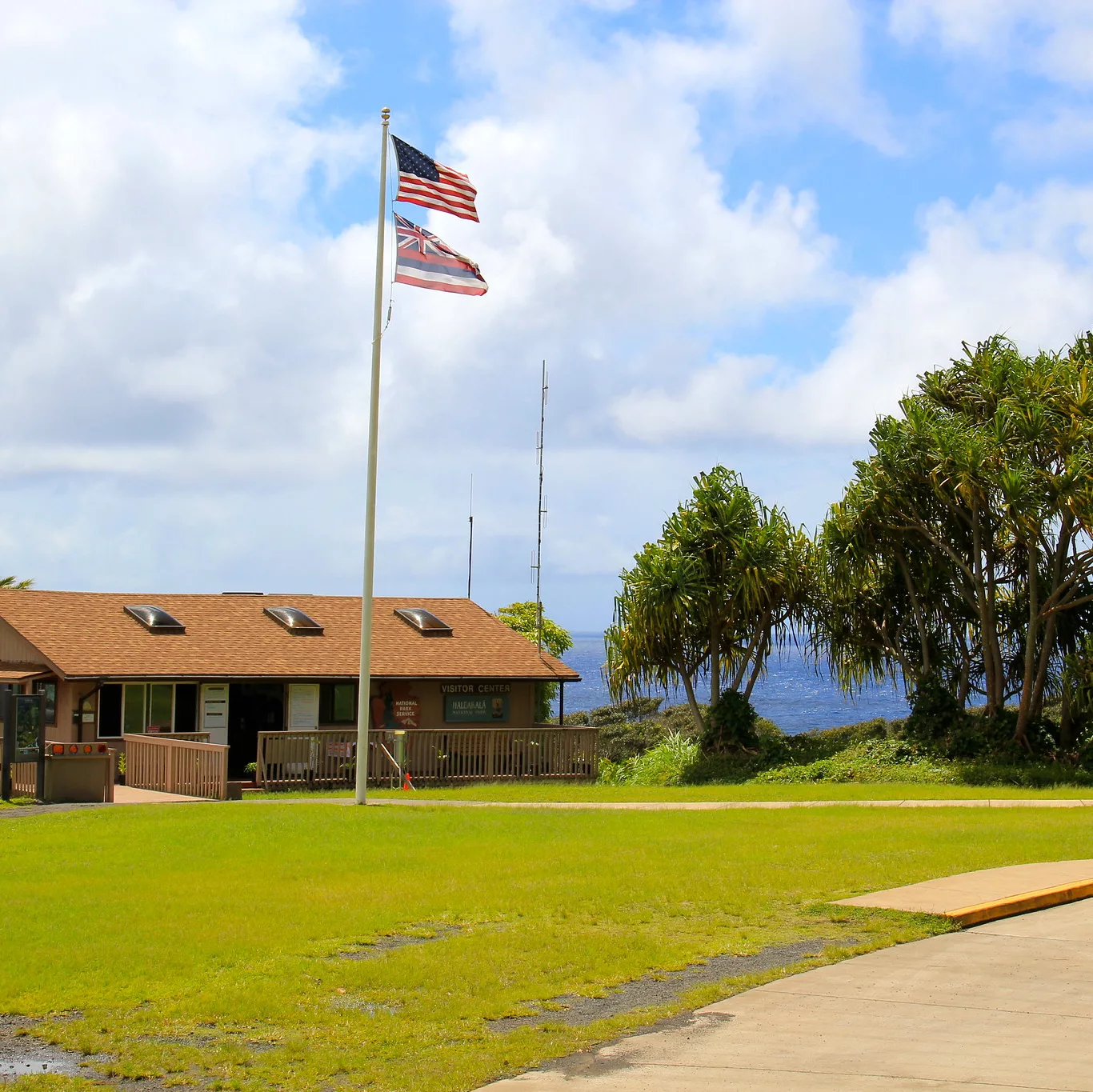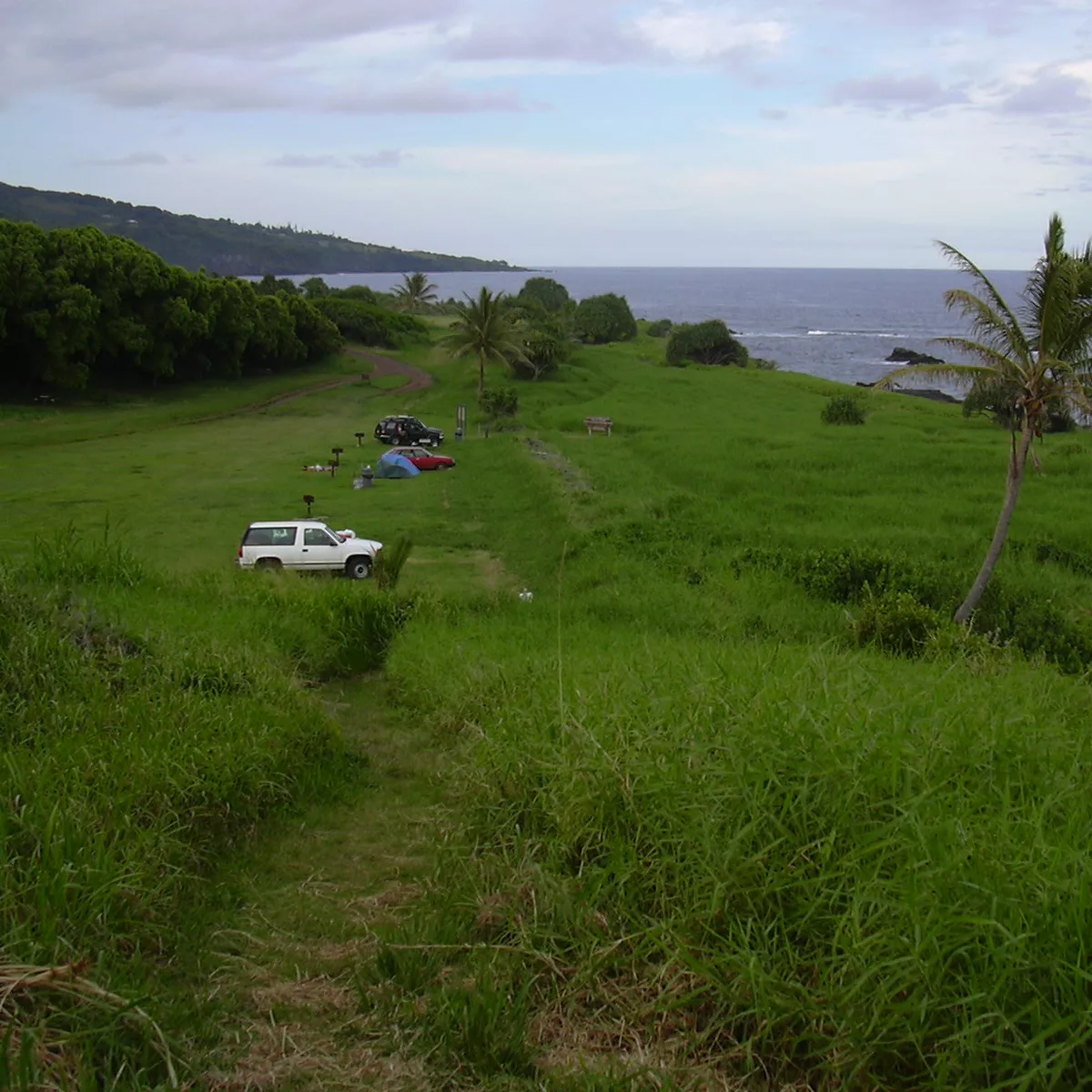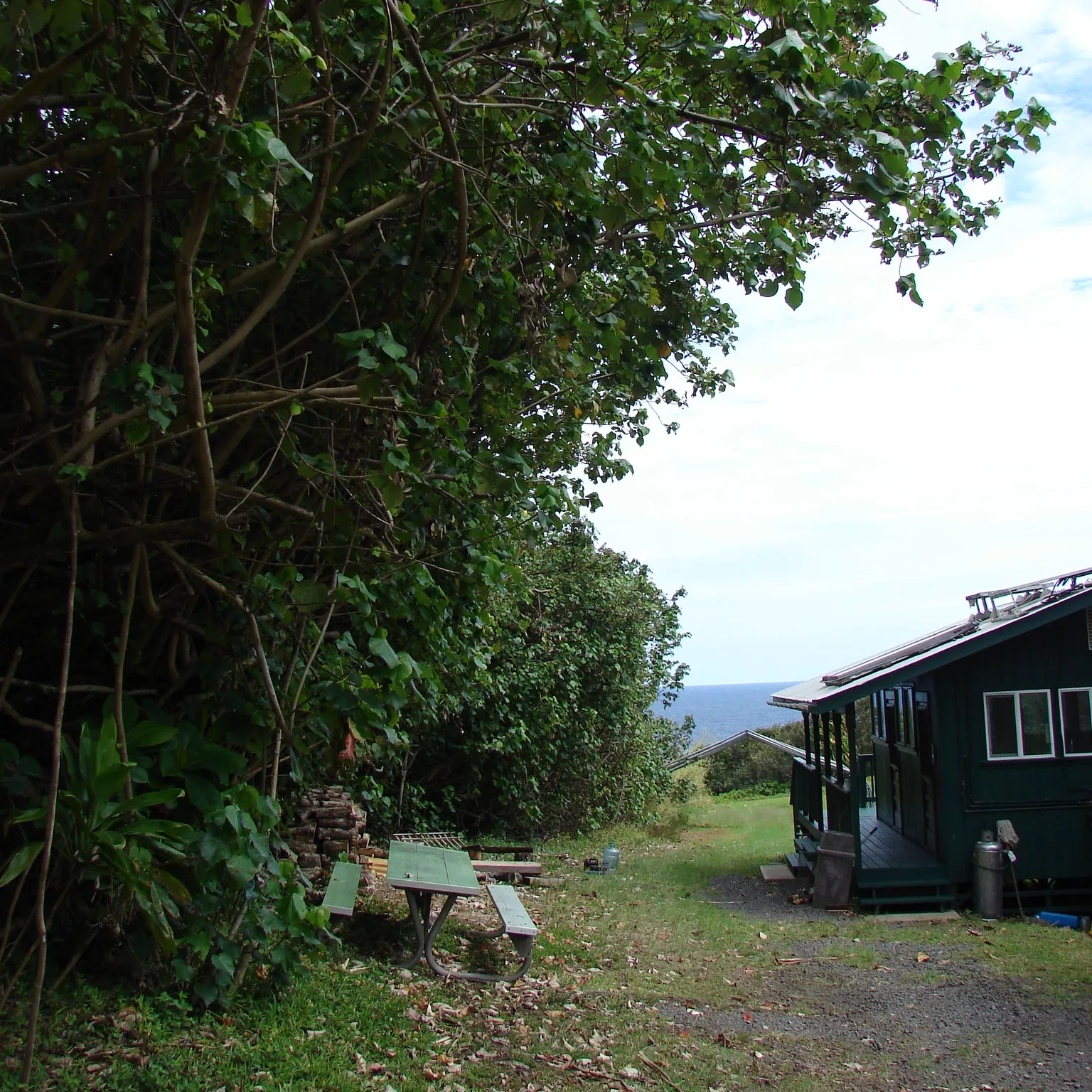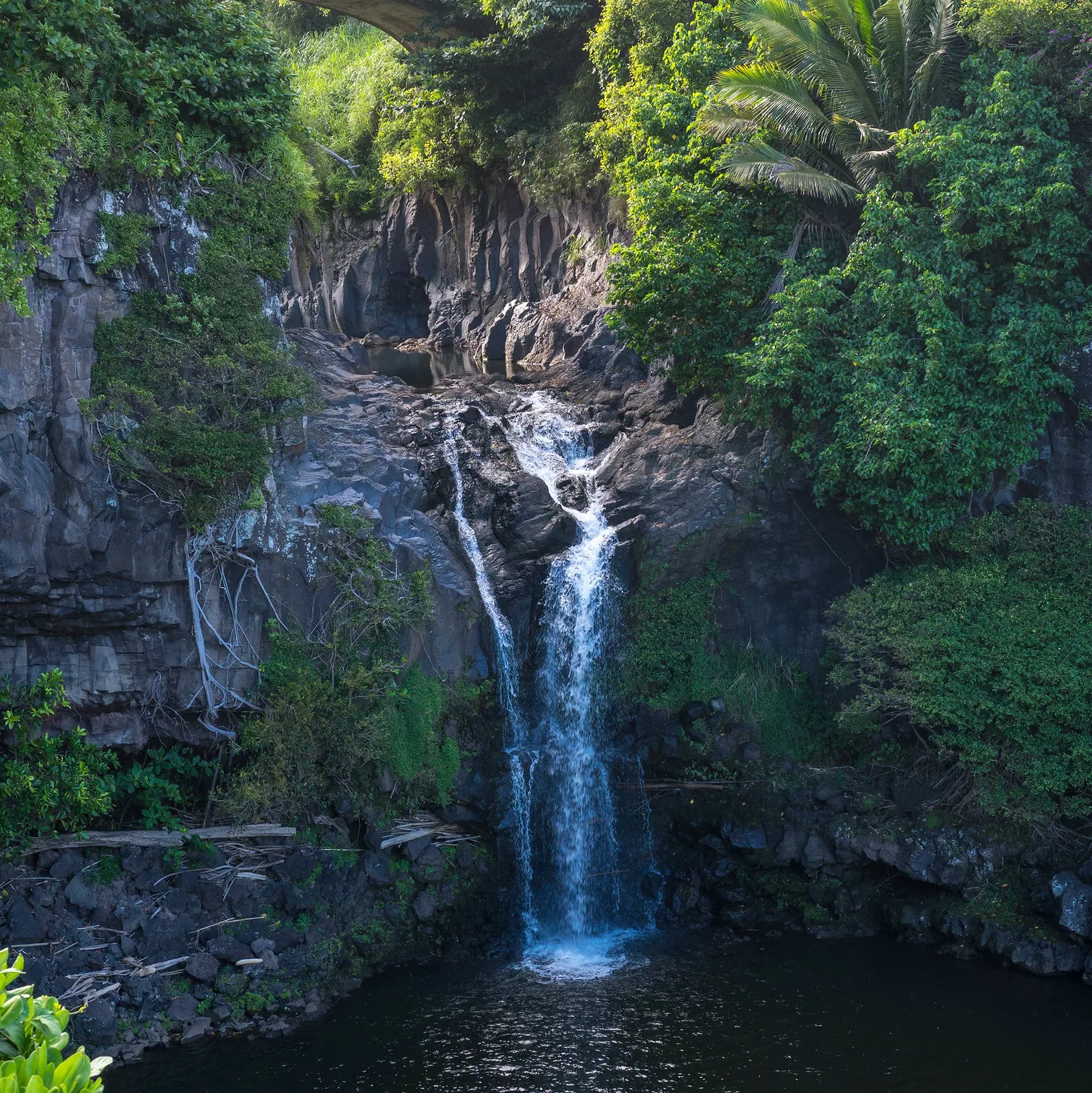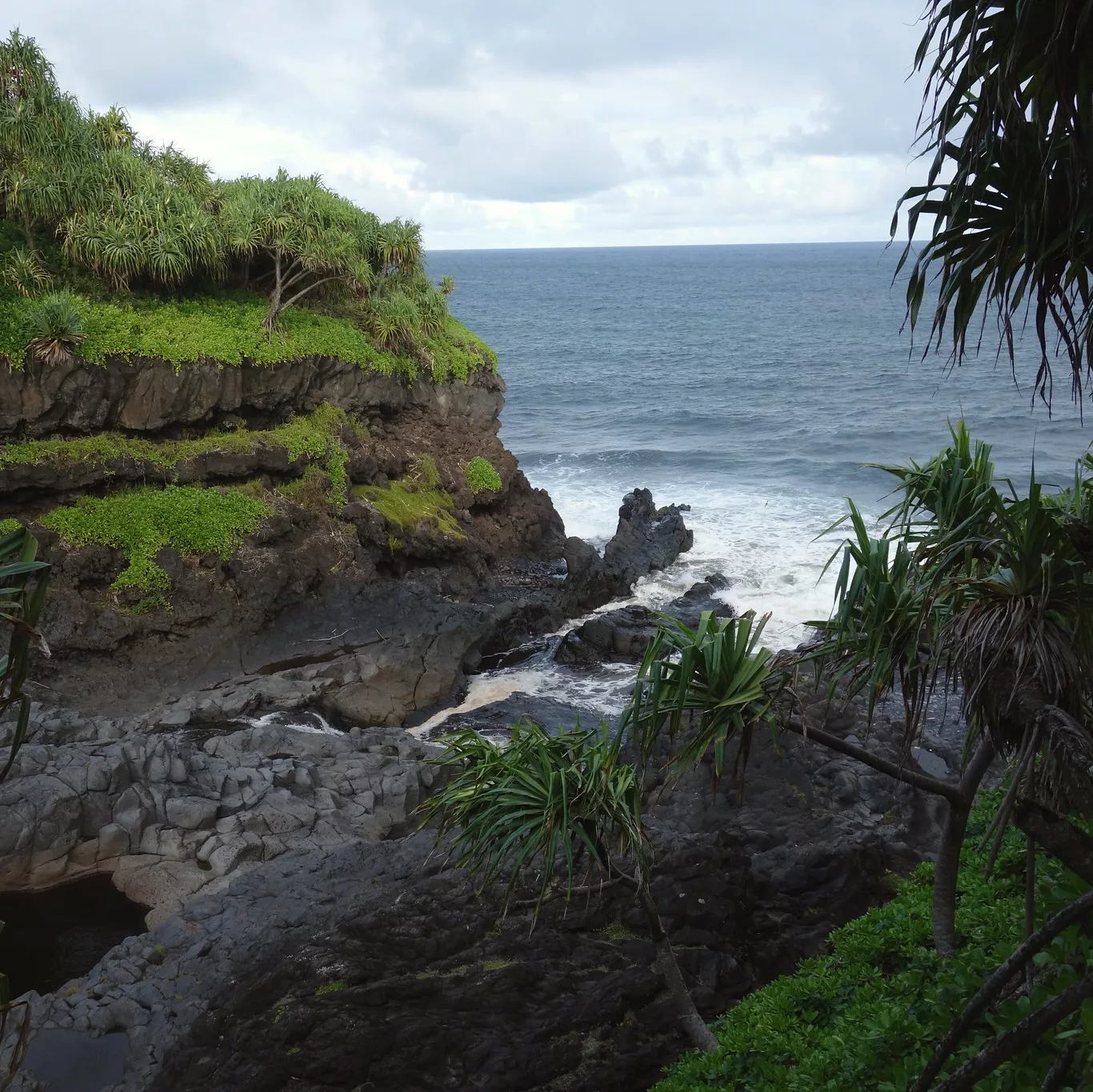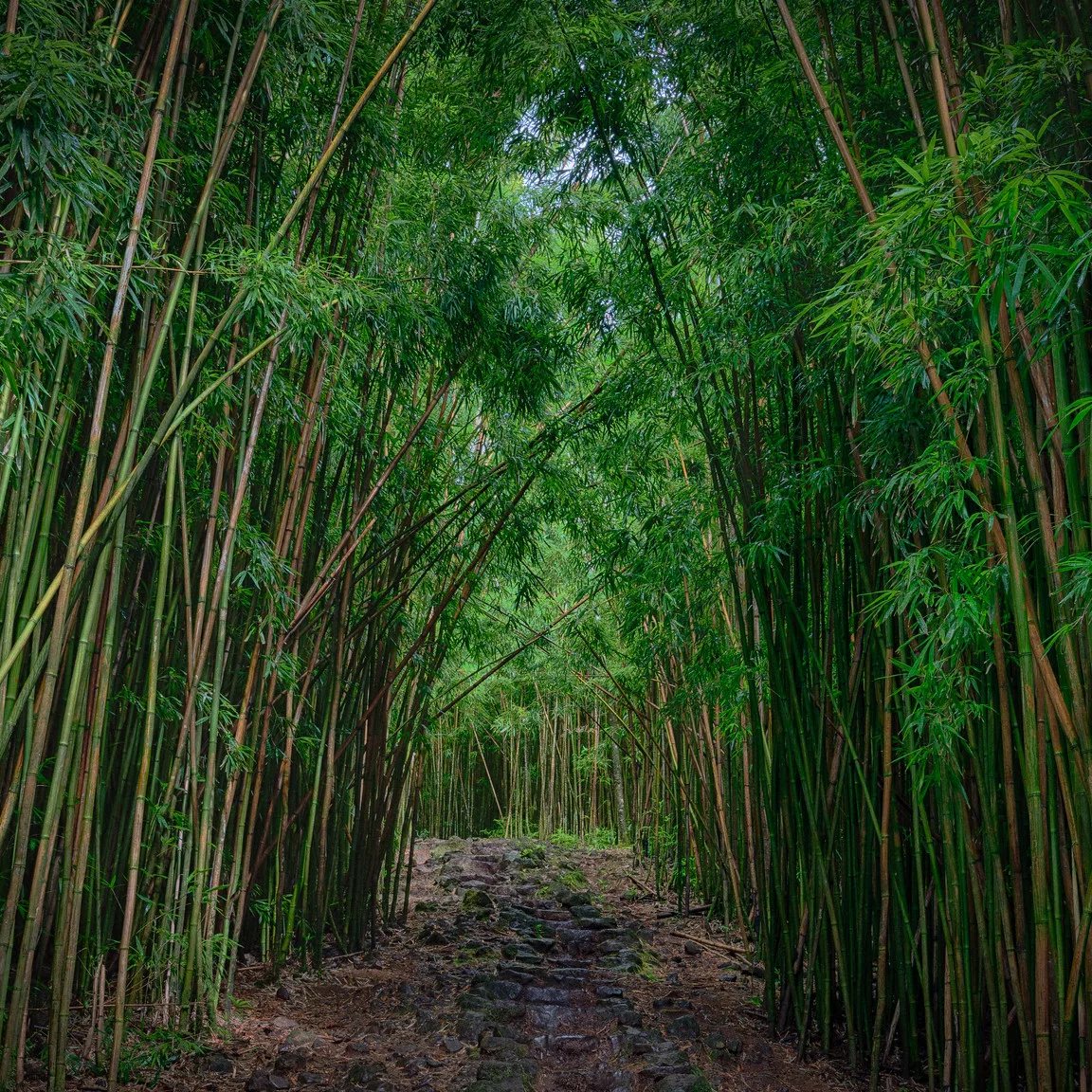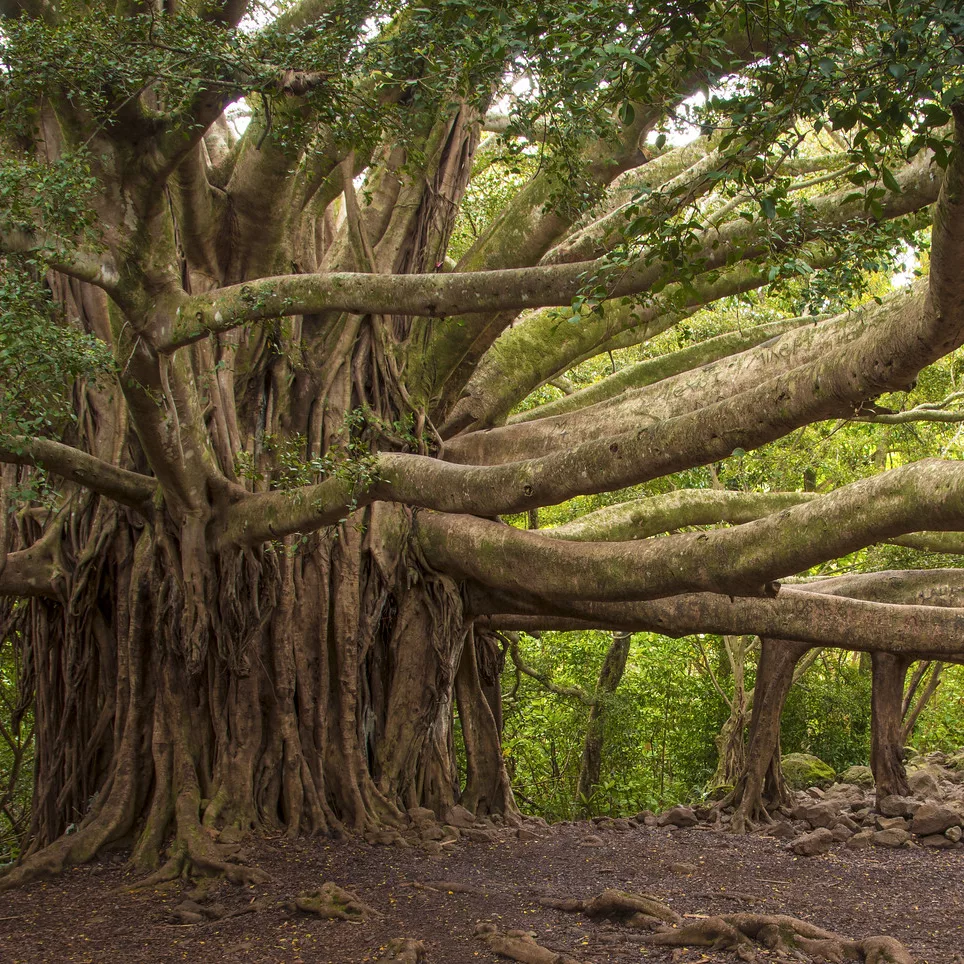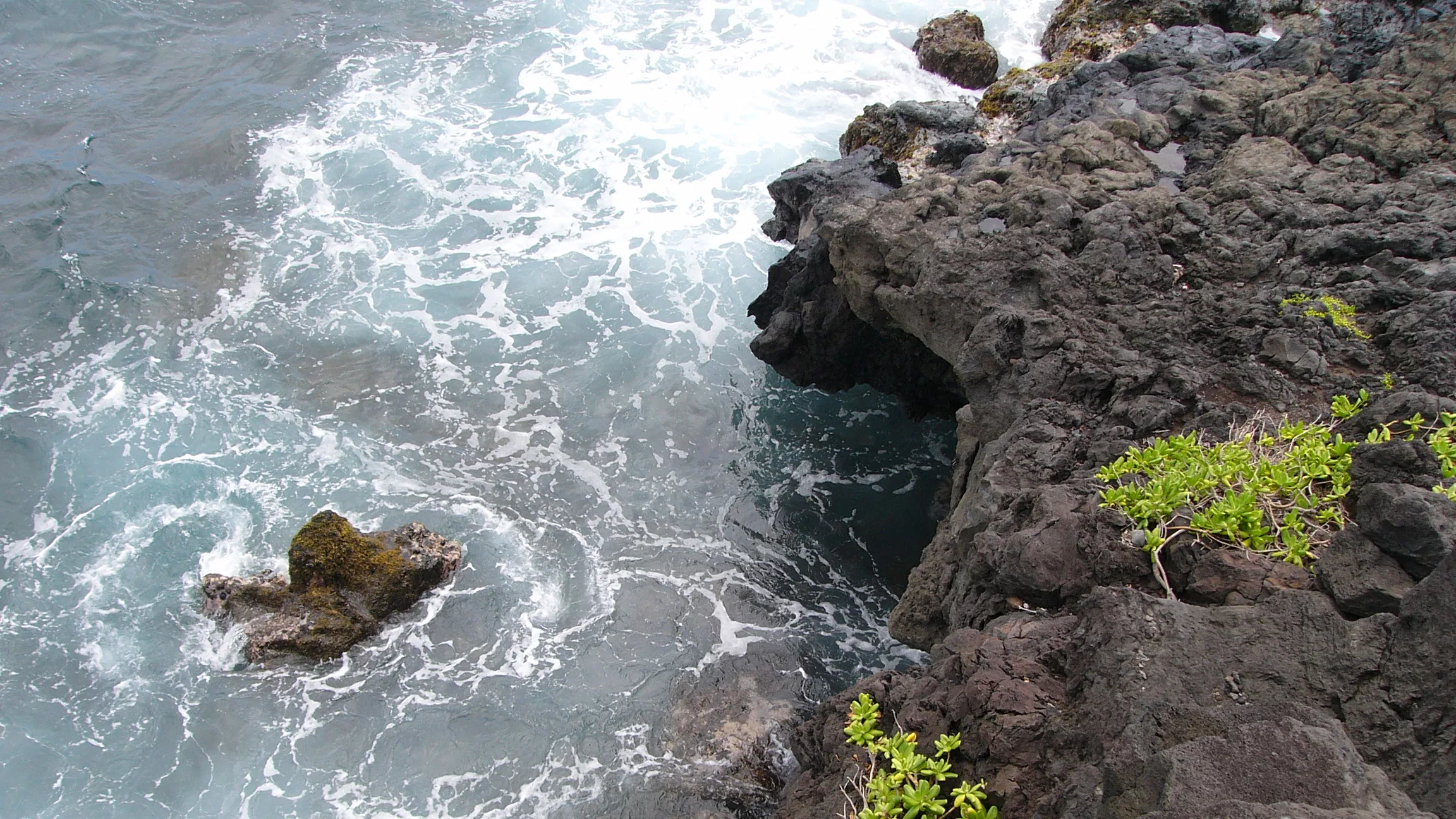
There are two sides to Hawaii’s allure. On one side, you have the chill hippie vibe/old-school Tiki Pop. However, there’s the unapologetically ravishing natural beauty on the other side.
Kipahulu Campground neighbors Maui’s forest reserve of the same name on the eastern tip of the ancient volcanic island. Brushed by the trade winds and rocked by the sound of the waves crashing on the coal-black rock bed, this sizable piece of land is part of the island’s only national park. Sites here are scarce and coveted. However, if you’re one of the few lucky to hit the jackpot on Recreation.gov, you will be able to discover old Hawaii in a very different way from the one you get at your favorite Tiki bar.
Table of Contents
The Kipahulu District of Haleakala National Park
Most visitors to Maui come to Kipahulu, never realizing it. In the Venn diagram formed by the Haleakalā National Park and the Road to Hana, we find the Kipahulu District in the intersection.
This anonymousness comes from being overshadowed by these two titans of tourism. In fact, many of the Road to Hana’s must-sees/must-dos are located at Kipahulu. (See “things to do” below)
Vast extraterrestrial red and orange valleys. These are the images conjured by Haleakalā National Park. That’s why crowds flock every morning to the volcano’s summit and wait, freezing, to see the sun rise over the sands, sliding God knows where.
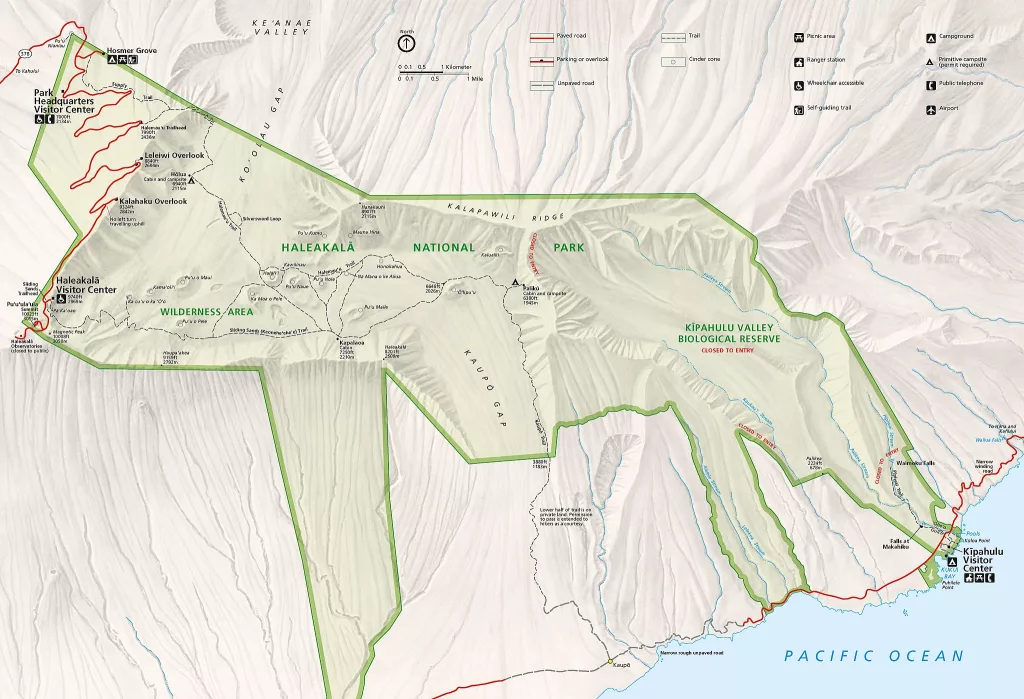
Once the prophecy of the beautiful dawn has been fulfilled, you inevitably go inside the Visitor Center. You notice the small postcards of lush forests and waterfalls; another place called the Kipahulu District, a mysterious protected tropical forest where a verdant paradise meets the untamed blue sea.
Once used as a port for inter-island transportation, the area is now protected, and a large part of the land near the town of Kipahulu is under the umbrella of the NPS.
Getting to the Kipahulu Campground
It is well-known that the “Road to Hana” does not actually end in Hana. It ends some 12 miles past the town. Indeed, meandering through East Maui, as pleasant as the experience is, would be a crime if you did not go all the way and beyond. Hiding on the backside of Haleakala, the bamboo forest is undoubtedly worth the extra mile required to get there.
To get to Kipahulu Campground, take the Hana Highway to the end, past Hana, and stop just before it becomes the legendary warranty-voiding Piilani Highway. From Kihei, the 70-mile route takes approximately 3 hours to cover. Expect about the same time if you’re leaving from Kaanapali and its resorts.
Camping in Kipahulu is an opportunity to extend the Road to Hana over two days. Even better, if you stay here for 2 nights, you can take advantage of this unique opportunity to do what very few visitors do and spend more time in this remote area of Maui.
Making Reservations & Picking Your Site
Kipahulu Campground is open year-round, allowing tent camping and camping trailers in its glorious 21 sites.
Campsites cost $8 per night + $30 per vehicle for the a 3-day pass to Haleakala National Park
Upon arrival at the park, you must purchase a 3-day Entrance Pass at the Entrance Gate.
Reserving a camp site
Like many other NPS campsites, the Kipaulu sites were previously First-Come, First-Served. You could come and camp here relatively without worrying about securing a place ahead of time. There was always space available. Just like Hosmer Grove, you must book in advance to sleep in Kipahulu Campground.
Reservations can only be made up to 30 days in advance. But let’s be honest; during the high season, sites sell out quickly. Recreation.gov opens new booking windows at 13:00 PM EDT. By 13:05 PM, they will most likely all be gone.
Theoretically, the best sites at Kipahulu Campground are 16, 17, 18, 19, and 20. For all practical purposes, take any that is available.
You can camp here for a maximum of three nights per 30-day period. Each campsite allows a maximum of six people and two tents. Make sure you have the printed confirmation email with you at all times.
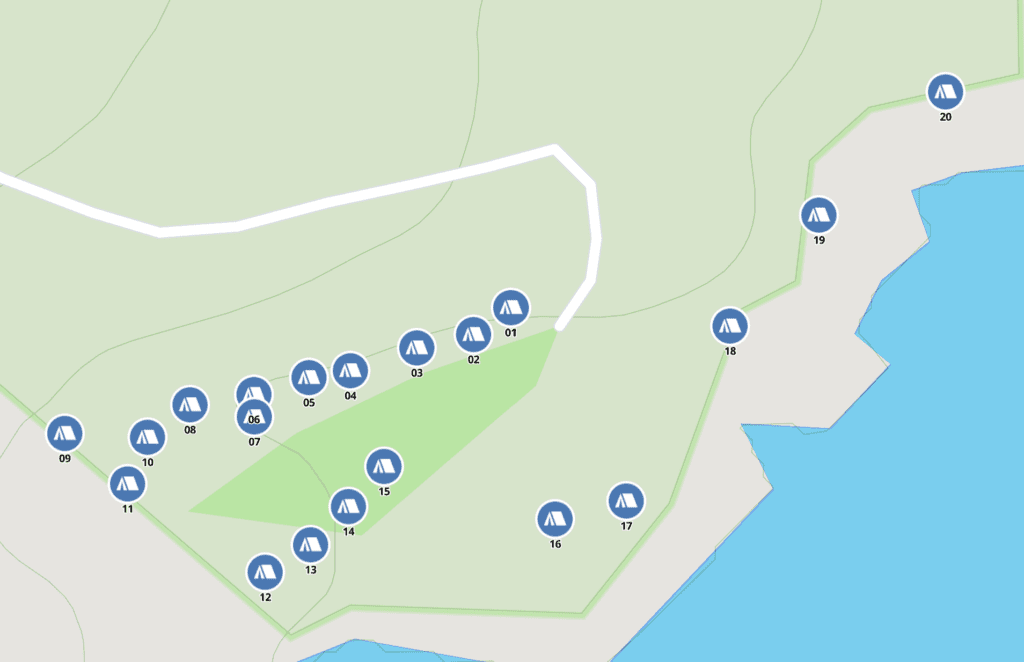
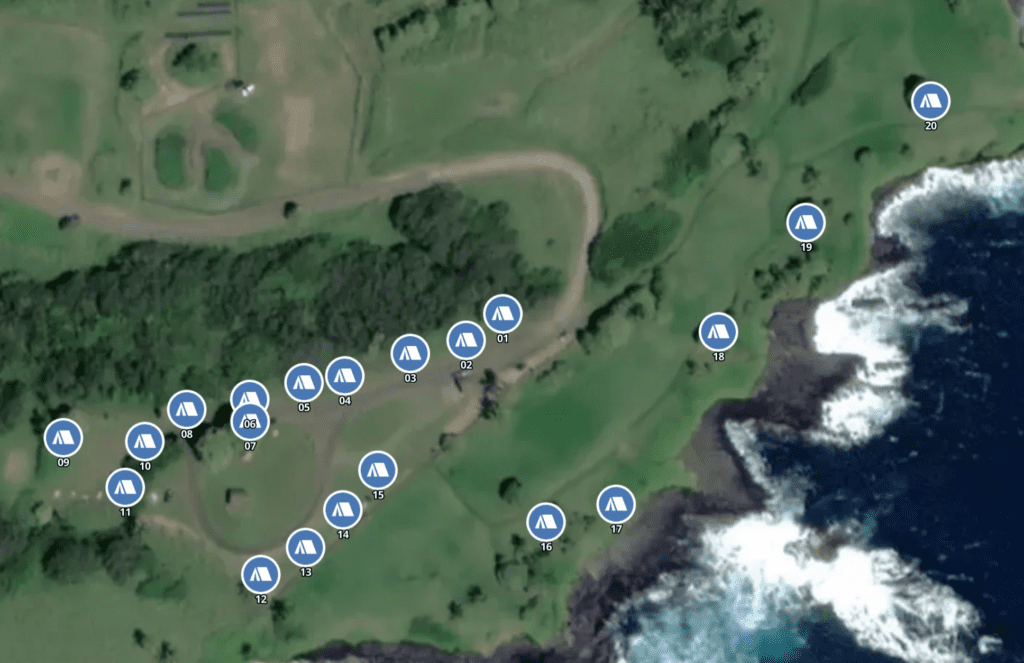
Camping at Kipahulu Campground
Campground Amenities
Although Kipahulu evokes the old Hawaiian lifestyle, it doesn’t possess any walk-in campsites. That’s, however, the only thing that prevents it from being a rustic campground. While every site is accessible by car, don’t expect to find electric hookups, flush toilets, or showers. There is no potable water on the site, making you walk all the way to the restrooms of the Kīpahulu Visitor Center to get some. (You can also obviously just bring water bottles in your car.)
Even though it overlooks ocean cliffs, the campground has no beach access, making taking a dip difficult.
What to Bring for Camping
- The camping basics (tent, sleeping bags, sleeping pads, camping cookware, food, lots of water, clothing layers, etc.)
- Sunhats, Reef-Safe sunscreen and sandals
- Hiking boots
- Full rain gear and down jacket
Maui Camping Gear Rental Options
Maui Camping Company functions differently. They offer three options: the “minimalist kit,” the “not too shabby kit,” and the “shameless glamper kit,” ranging from $225 to $325 per week.
You can rent a wide variety of camping gear at Maui Vacation Equipment. The price depends on what options you need. You can also rent coolers, beach chairs, and camping stoves.
Things to do in the Kipahulu District
The camp’s lack of amenities doesn’t mean you’ll have a bad time at Kipahuli. The campground is, in fact, a place where inhabitants of the Aloha state love to gather and party into the late hours. A gamble on a bad night might nonetheless be worth it (even for one night). Laughter crackling among the sound of the winds on your tent, you can still spend a peaceful night at Kipahulu. You can wake up in the morning to explore the Eastern part of this beautiful island.
ʻOheʻo Gulch (Seven Sacred Pools of ʻOheʻo)
If you leave your palm tree haven and go a little deeper inland, you’ll quickly encounter the crowd stopping at the end of the Hana Highway.
If you need a reason to camp at Kipahulu Campground, it’s to enjoy the Seven Sacred Pools of ʻOheʻo before people come flocking here later in the morning.
What makes this place so remarkable is the series of waterfalls marshaled together and feeding the many jade pools. This classic Maui attraction can easily see its charm shattered by the amount of tourists coming here, wanting to be bewitched by the ancient volcanic rock interspersed with climbing undergrowth. ʻOheʻo Gulch can be reached by hiking the short Kuloa Point Trail. While you once used to be able to swim in the freshwater, it is now forbidden in the National Park.
If you’re visiting on a rainy day, you may want to consider skipping this part of the Kipahulu District. Heavy rains transform the delicate lakes into a raging torrent of brown water.
Bamboo Forest of the Pīpīwai Trail
One of the most popular hike in Maui, the Pipiwai Trail in Haleakala National Park is right at the end of the Road to Hana.
People usually choose to walk this path after having checked out the Sacred Pools.
Heading deeper into the backside of Haleakala, the trail is ever changing. While the Court Park of Lahaina hold a particular spell, the Banyan Trees on this side of the island shines more brightly in this setting. The bamboo forest you enter after the indisputable high spot of the hike.
If you left your coconut tree-lined campsite early, you’ll have the chance to have it to yourself! (Without the swarm of visitors, you can hear the sound of the wind blowing through the bamboo stalks.) The rest of the path is worth walking for the several outlooks, bridges, and, of course, the 400 ft drop waterfall at the end!
Hale Hālāwai
“
Hale – House, building
Hālāwai – Meeting, to meet
Hale Hālāwai – A meeting house, a building for public meetings.
This hale was built by National Park Service staff from two sites and two islands. Staff members from the Kīpahulu District of Haleakalā worked with staff from Puʻukoholā Heiau Historic Site located on the island of Hawaiʻi. Working together with guidance from Kumu (teacher) Sinenci, the hale was erected in 2010.
Due to damage and weathering the park decided to re-erect the hale and in 2019 started to rebuild the structure. Originally this hale was intended to serve as a hale kuʻai (store), but will now be used as hale hālāwai where the public can participate in cultural demonstrations and interpretive programs.
“
– From the NPS Website
Makahiku Falls and Waimoku Falls
Two main waterfalls are found along the Pīpīwai Trail.
Makahiku Falls are the easiest to access. They can be seen after hiking the trail for about only 0.5 mile (0.8 km). At that point, you reach the overlook where the 61 m tall waterfall and the surrounding valley in all their glory. If you’re coming here with young children, you can stop here. Makahiku Falls can be a great place to turn around if you wish for a shorter hike.
Wading all your way throught the rainforest, you’ll find after another 1.5 miles (2.4 km) the Waimoku Falls. (Getting to Waimoku means a 4 mile (6.4 km) roundtrip trek.) The sheer highness of the water cascading down the massive rock face can only be described as breathtaking.
When to camp at Kipahulu Campground
Being smack dab in the middle of Maui’s rainforest, Kipahulu Campground is often hot and humid. You can expect a mix of intense showers and sun: the perfect combination for mosquitoes.
The best time to visit Maui are the month of April, May, August, September, and early October. This is taking into consideration the weather, the demand for accommodations, and the general crowdedness of the island.
East Maui, on the other hand, sees a lot of rain from mid-August to the middle of May. (The month with the most rain is usually March.)
If you want to camp at Kipahulu with the least chance of encountering raindrops, come here in June.
Thinking of other camping destinations?
Nothing beats the tropical charm of camping on a Hawaiian island. On the other hand, it’s also possible to go camping in the south of Europe, along the edge of the Mediterranean.
Why not go camping in Andalusia instead? The Spanish region has fantastic weather, and you can take city breaks in beautiful historic towns.
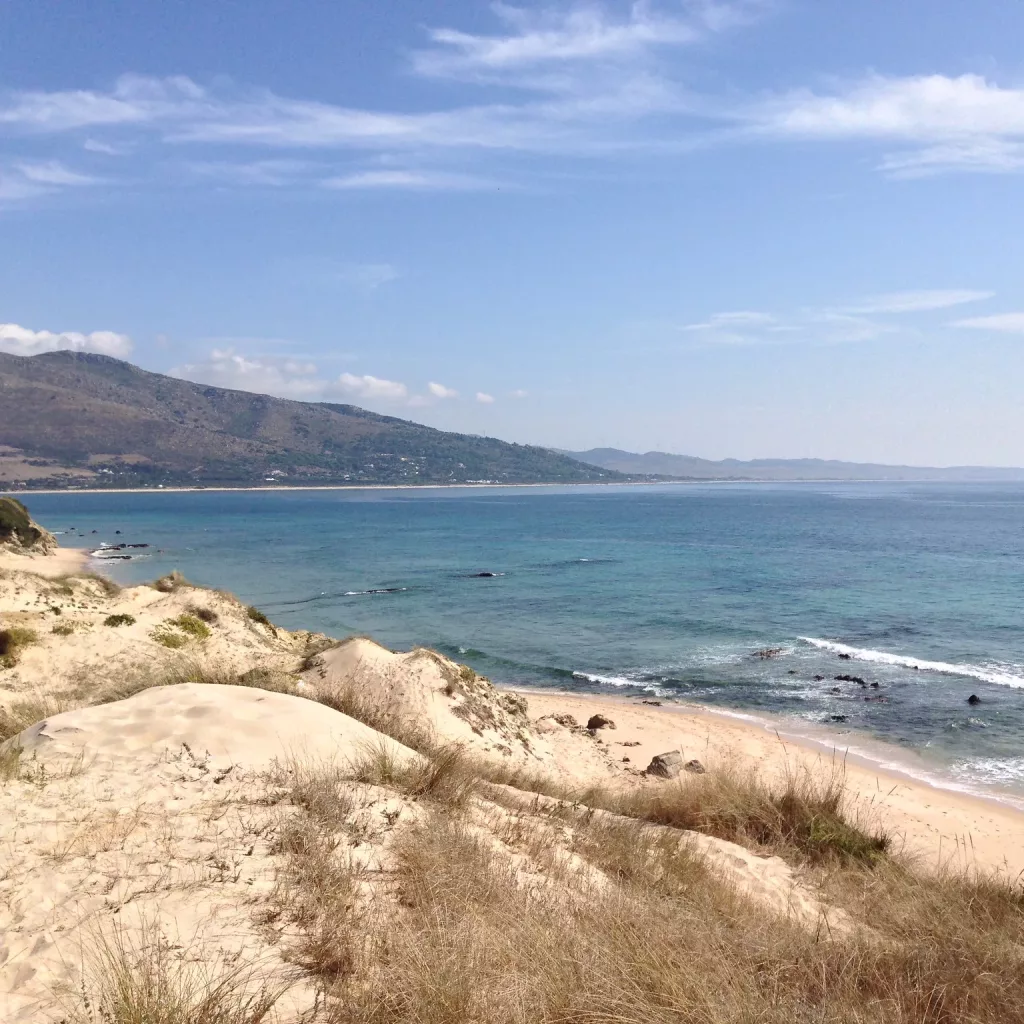
Other Campgorunds on Maui
